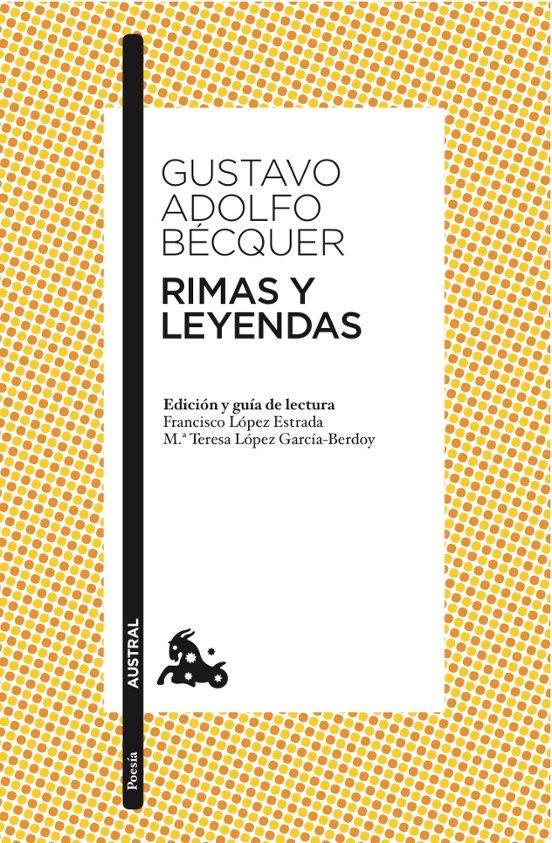Rimas y Leyendas / Rhymes and Legends
 “>
“>
Autor:
Gustavo Adolfo Bécquer
Country:
Spain (ES)
Book Theme:
Poets representing your country poetry
Publisher:
ESPASA LIBROS
Publishing Year:
2010
Bécquer was a Spanish romantic poet and writer who died at the age of 44. His works include his famous “Rimas y leyendas” but he also wrote plays, letters and articles.
He received his literary training at the Sevillian Institute, but in October 1854 he moved to Madrid, where he had many financial difficulties until 1860, when he got a job as an editor at the newspaper “El Contemporáneo”.
In 1857 he began an important work, the “Historia de los Templos de España”, in which he studied Spanish Christian art, combining religious thought, architecture and history. He collaborated in comedies and zarzuelas such as “La novia y el pantalón” and “La venta encantada”.
In 1870 he was appointed director of La Ilustración de Madrid and died on 23 September of the same year.
National Award for Children’s and Young People’s
Abstract
Rhymes and Legends is a collection of scattered poems and stories, collected in one of the most popular books of Hispanic literature.
This book compiles works in verse and prose written by Gustavo Adolfo Bécquer, collected and published after his death, starting in 1870 as “Obras” and under the title “Rimas y Leyendas” from 1871.
The legends are made up of 18 stories of folkloric origin with all the elements typical of Romanticism, set in different parts of Spain. Bécquer creates an atmosphere of mystery in which reality is confused with the fantastic and the supernatural.
The collection of ‘Legends’ is the perfect example of the literature of that period: stories full of mystery, magical characters, spirituality and surprising endings.
The rhymes are a collection of short poems of popular tone, characterised by the brevity and simplicity of their compositions, with many emotions that the author conveys to perfection. Bécquer gives shape to a new lyrical form characterised by a melancholic tone, symbolism and simplicity.
The rhymes are organised in 4 blocks:
– Rhyme I to VIII deal with poetry and the act of literary creation.
– Rhymes IX to XXIX are about love seen with joy and hope.
– Rhymes XXX to LI focus on the sadness caused by the disappointment of love.
– Rhymes LII to LXXVI they revolve around loneliness, pain and death.
The ‘Rhymes’ of this great romantic poet par excellence have been a source of inspiration for many generations, glossing love, disappointment, anguish and loss. On the other hand, the collection of ‘Legends’, are the perfect example of the literature of that time: stories full of mystery, magical characters, spirituality and surprising endings.



